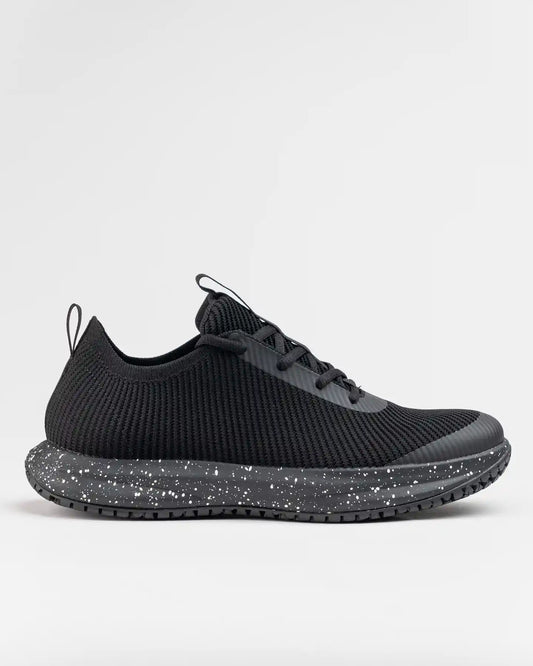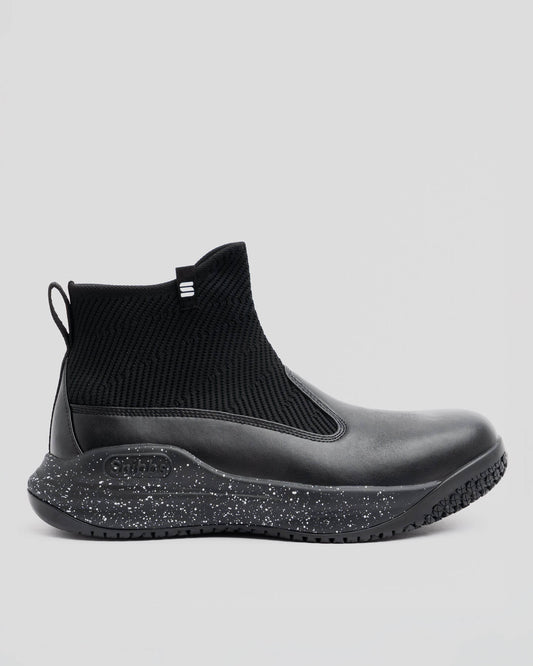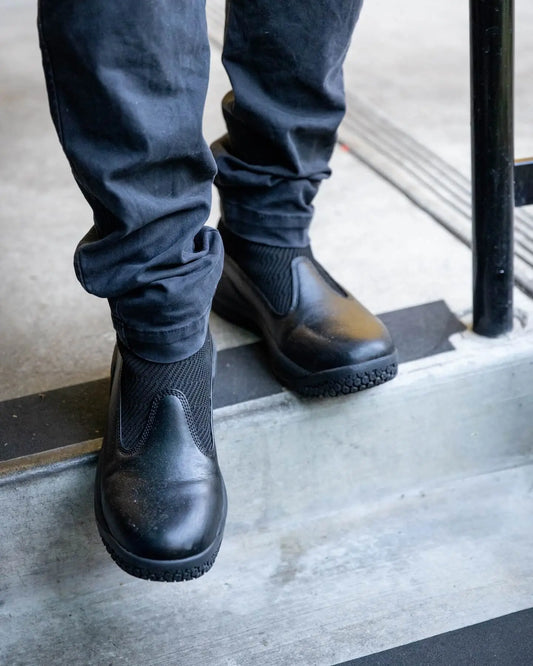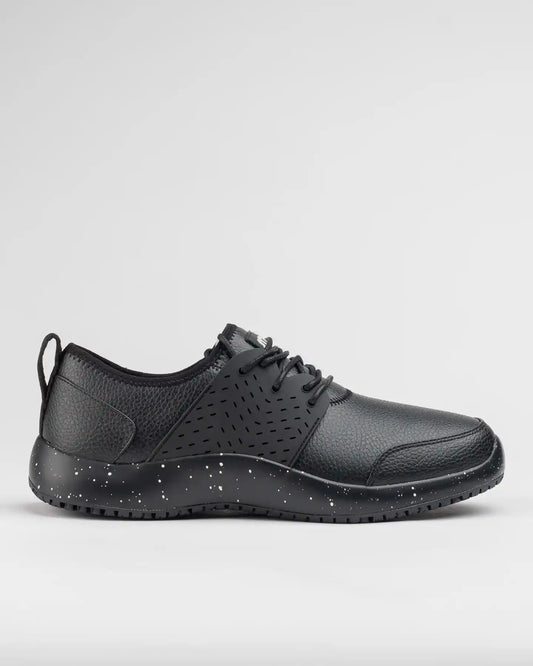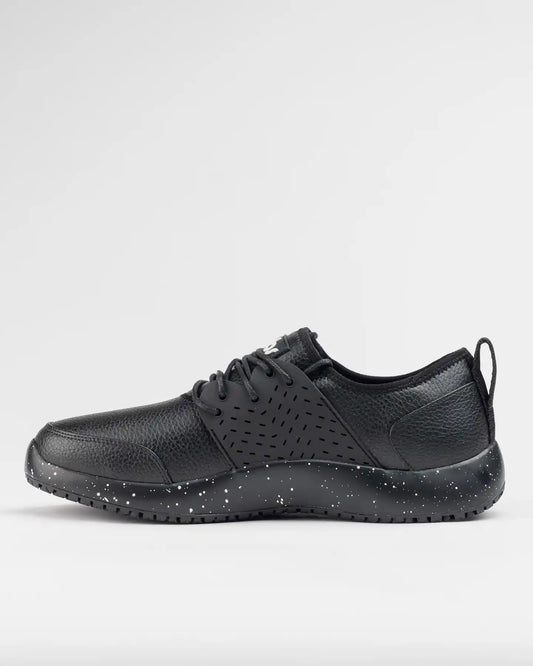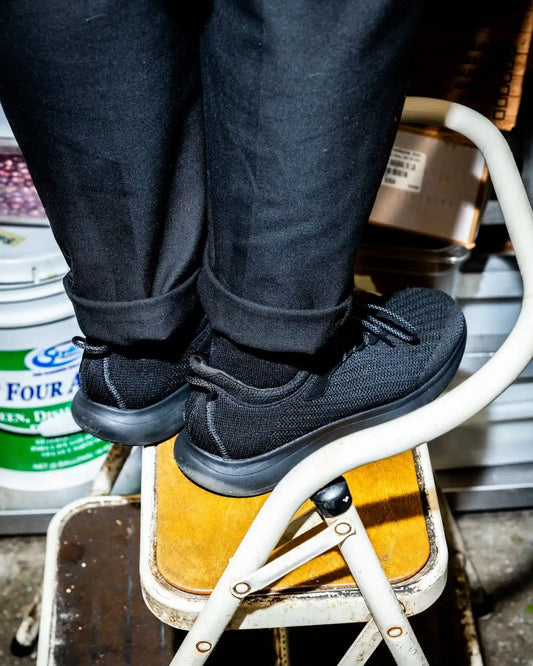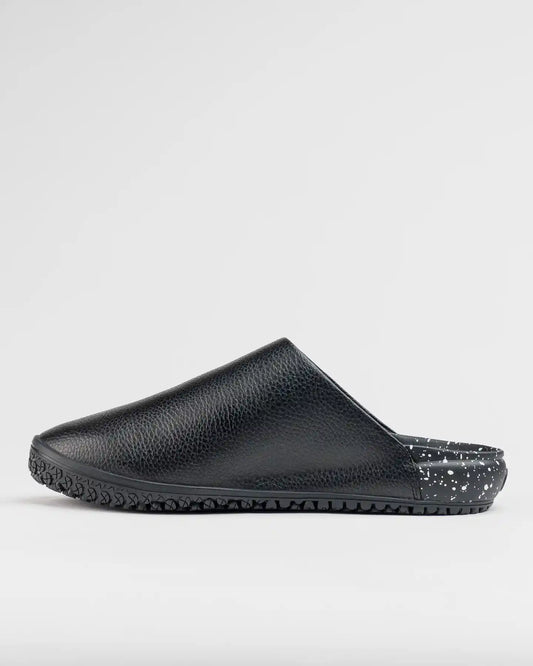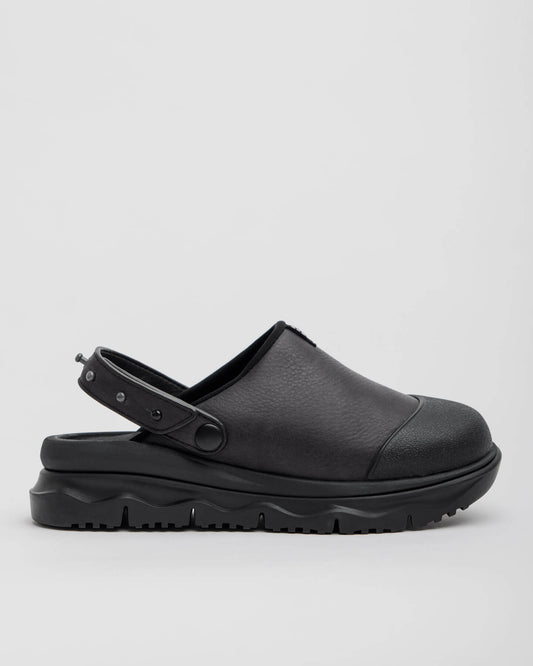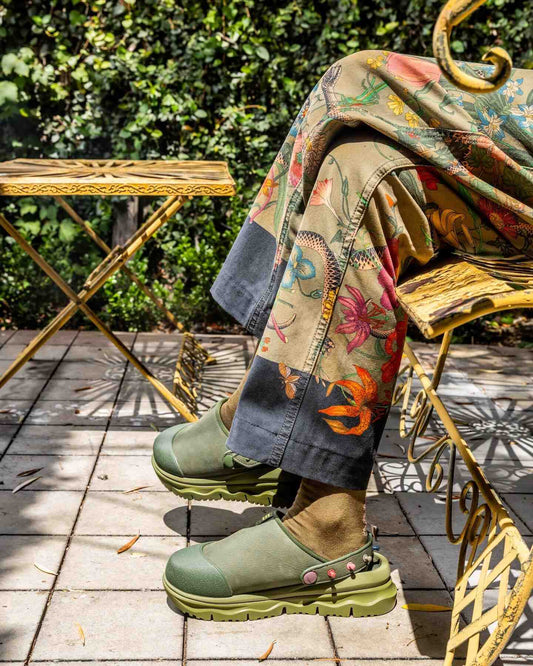The Environmental Impact of Shoes & How to Prevent It
Alex Kinejara
When you’re searching for a cozy new pair of work shoes, you’re probably focused on two key criteria—comfort and support. But one factor you might not have considered is the adverse environmental impact they pose to the planet.
Although many individuals are taking an active approach to establish a more sustainable Earth, shoe wearers from Montana to Morocco (and every city in between) unknowingly overlook the environmental damage shoes can potentially bear on our environment.
From their creation in factories to what occurs after you throw them away, we’re breaking down the environmental impact of shoes on the world and providing some tips on how you can do your part so that you can have your sustainable sneakers and wear them guilt-free, too.
How Much Waste Does Shoe Manufacturing Create?
As you walk down the shoe aisle looking for a pair of work shoes with all of the comfortable bells and supportive whistles, have you ever wondered what goes into making each pair?
In order for a pair of shoes to become the ever-reliable footwear that keeps your tootsies dry, comfortable, and stylish, shoe-making factories must emit alarming amounts of carbon emissions to make them—1.4% of all global greenhouse emissions, to be exact.1
To put that number into perspective, a typical day of air travel sees a bustling 45,000 flights a day.2 That adds up to 16 million flights a year, which roughly contributes to 2.5% of the overall greenhouse emissions annually.3
So how exactly are your shoes causing almost half as much damage as all of the airplanes in the world?
The answer is simple: sneaker production.
From concept to creation, here are some of the fundamental ways shoe brands create waste through manufacturing.
Factories Burn Through Fossil Fuels
Around the world, shoe factories manufacture over 20 billion pairs of shoes for consumers each year4 (that computes to about 55 million pairs of shoes—every single day). From sandals and cowboy boots to boat shoes and tennis shoes, to say that’s a lot of shoes would be an understatement.
For each hard-working factory to meet its daily shoe quota, it requires a demanding amount of fossil fuels to adequately cut, stitch, and assemble each shoe. With thousands of factories operating at maximum capacity each day, it’s easy to see how their CO2 emissions quickly add up to 1.4% of all greenhouse emissions in the world.
Shoes Often Require Non-Biodegradable Materials
Another cause of shoe waste is because of the materials some companies use to assemble their fashionable footwear. Let’s use your favorite pair of running shoes as an example. They likely received that honorable distinction due to their ability to enhance your running performance and add an unmistakable pep to your step.
Although they were your dedicated running partners for the last six months to a year, they’ll take much longer than a year to break down after you throw them away. If they’re made of plastic, your favorite sneakers can take up to 1,000 years to decompose in a landfill.5
Let’s take a look at some of the common materials companies use in shoe production and how they contribute to the growing amount of global shoe waste:
-
Plastic – Although plastic has a bad rap when it comes to sustainability, it’s hard to deny that it’s benefited many a shoe, thanks to its ability to make them lighter, more comfortable, and more accessible to people around the globe. However, when shoe companies combine various plastics to create their shoes, it becomes more challenging for each pair to biodegrade.
In contrast to plastic, which takes hundreds of years (or up to a thousand) to decompose, here’s a quick analysis of how long it takes other commonly used materials to break down:6
- Leather shoes – 25 to 40 years
- Rubber shoes – 50 to 80 years
- Leather – Sure, leather is more biodegradable than plastic, but this popular shoe material still encompasses 33% of annual shoe sales7 and is partially responsible for a multitude of environmental impacts, including:
- Being responsible for 14.5% of greenhouse emissions – A large portion of greenhouse gases occur because of feed production and enteric fermentation (aka cow burping) on farms where ranchers intend to use them for their hides.8
- Increasing deforestation around the world – Cows require a lot of land to roam and graze. Many farmers who use cattle to create leather deplete hundreds of thousands of acres of forests and ecosystems to create space to raise their cows.
How Footwear Companies Are Combatting Global Shoe Waste
People throw over 300 million pairs of shoes away every year, contributing to global shoe waste.6 Thankfully, many major shoe brands are aware of the negative impacts this can have on the environment and are working proactively to improve how they assemble and distribute their shoes.
Some of their recent strategies include:
- Improving manufacturing – Some shoe companies are setting high standards in terms of manufacturing, intending to use solely renewable energy across all of their work sites to lower their overall greenhouse emissions.7 Others are using 3D printers to make their footwear, considering ways for better waste removal, and looking for more ethical material sourcing.
- Creating eco-friendly shoes – Some shoe brands are working to develop more eco-friendly shoes for consumers. One strategy involves using cleaner chemicals and materials to make their footwear. Another includes repurposing previously used (but still completely functional) shoe parts to create new limited-edition models. Lastly, other brands are considering using 100% recyclable materials to manufacture their shoes so that they decompose more easily.7
- Developing sustainable programs – In addition to creating completely recyclable shoes, some brands are taking sustainability to the next level by turning old shoes into floors for gyms and tennis courts. They’re even working on developing lines of footwear from bioplastic, a biodegradable form of plastic that’s easy to break down once it finds its way to a landfill.6
What You Can Do to Help
Shoe brands aren’t the only ones taking a stand against global shoe waste. Everyone can help contribute to the solution, from footwear fashionistas to footwear skeptics.
Here are a few ways you can do your part in helping to reduce the environmental impact of shoes:
Resell or Donate Them
You and your beloved pair of shoes may have made many beautiful memories (and ensembles) together, but after they’ve run their course, what’s next? If the shoes are still in suitable condition, you can sidestep the old mindset of tossing them in the trash. After all, one man’s trash is another man’s treasure.
Consider giving your old pals a second chance at life with some of these options:
- Resell them – Whether you only wore them once and promptly forgot about them in the corner of your closet or you took great care to keep them in their prime, you can resell your shoes, help the environment, and earn yourself a few extra dollars in one fell swoop. From apps to consignment shops, there are plenty of ways to sell your shoes—and just as many people are ready to buy them if the price is right.
- Recycle them – Perhaps you gave your shoes so much love that it’s apparent via the run-down soles, tears, and scrapes to the fabric. Thankfully, you can still avoid throwing them in the trash. So, how to recycle shoes, exactly? Instead, find a recycling program near you created specifically for old shoes. They can use your shoes to create brand-new items that thousands of people can enjoy, like playgrounds and football fields.
Buy Eco-Friendly Shoes
When you’re buying your next pair of sneakers, think green—sustainability, that is. At Snibbs, we take global shoe waste seriously and strive to do our part in keeping our processes clean and sustainable.
One way we do that is by creating eco-friendly shoes using almost completely recyclable materials. We use sustainable materials for shoes, such as:
- 100% recycled cotton laces
- 100% recycled polyurethane midsoles
- 30% plant starch-based lace braces
With sustainability in mind, our shoes will biodegrade back into the earth hundreds of years faster than shoes made from unsustainable materials. In addition, we use 100% recycled cardboard in our packaging to save trees, decrease energy use, and reduce greenhouse gases.
Spread the Word
Another way you can decrease the environmental impact of shoes is to shout it from the rooftops. Educate everyone you know about the importance of global shoe waste—your friends, your family, your coworkers, and even that barista that complimented you on your stylish sneakers. Let everyone know what they can do to cut back on shoe waste.
Snibbs: Make The World a Better Place Starting With Your Shoes
Whether you work the halls of a busy hospital or you’re rushing from table to table to bring customers their food and drinks, it’s important to know you’re donning a pair of shoes you can count on—and are coming from a brand that cares about the planet and everyone in it. Our sustainable footwear made from recycled material aims to eliminate carbon emissions to better the shoe industry every day.
At Snibbs, we offer the best of both worlds—a stylish vegan shoe that provides unrivaled foot support and the comfort that comes from knowing your shoes are made with almost 100% recycled materials and a reduced carbon footprint. With shoes made for you—and the world at large—we’re putting our best foot forward so that you can do the same.
Find all-day comfort and peace of mind by browsing our collection of slip-resistant work shoes today.
Sources:
- Quantis. Measuring Fashion: Insights from the Environmental Impact of the Global Apparel and Footwear Industries study. https://quantis.com/wp-content/uploads/2019/11/measuringfashion_globalimpactstudy_quantis_2018.pdf
- FAA. Air Traffic By the Numbers. https://www.faa.gov/air_traffic/by_the_numbers
- Make Fashion Better. How Sustainable Are Sneakers? The Environmental Impact of Sneaker Production. https://www.makefashionbetter.com/blog/environmental-impact-of-sneaker-production
- The Shoes Industry. The Environmental Impact. https://theshoeindustry.weebly.com/environmental-impact.html
- Waste360. Recycling with Sole. https://www.waste360.com/Recycling_And_Processing/shoe-recycling-201004
- Unsustainable. Global Shoe Waste: The Environmental Impact of Footwear. https://www.unsustainablemagazine.com/global-shoe-waste/#Are_Shoes_Biodegradable
- Marker. Shoe Brands Are Moving Toward Sustainability, One Step at a Time. https://marker.medium.com/shoe-brands-are-moving-towards-sustainability-one-step-at-a-time-5d3e69080ad5
- Statista. Leather Footwear Report 2022. https://www.statista.com/study/48862/leather-footwear-report/
- FAO. Key Facts and Findings. https://www.fao.org/news/story/en/item/197623/icode/

